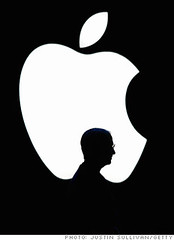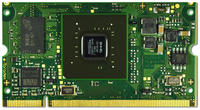| Victorinox Swiss Army knife, photo taken in Sweden. This is a Mountaineer model. (Photo credit: Wikipedia) |
Business is a passion that developed a little later in my life when I started wondering why some products succeeded and others failed. In particular I was confused when technologically superior products somehow lost out. This made no sense to me at the time and like most technically inclined people it drove me nuts.
It turns out there are some good logical reasons why companies and products fail. For instance not knowing what problem they are solving or spending their money in ways that don't actually help build their business. But there are bad reasons as well. One of the bad reasons is not being able to get the funding needed to take an idea to the finish line. This is particularly true when the idea in question isn't bad, but rather different enough from what has come before that the people with the money have trouble wrapping their heads around it.
Kickstarter has been around for awhile now but I'd never quite gotten around to checking it out. It turns out they provide a solution to the problems mentioned above. Kickstarter does this by providing a marketplace for ideas. If your idea catches the attention of enough people you get the money and sales you need to take that idea to market.
I have a background in HPC (High Performance Computing) which is why the recent Apapteva Parallella Kickstarter campaign caught my eye. Adapteva designs and manufacturers parallel processor architectures. From what I can tell they are a very small company operating in a marketplace that is both competitive and cost conscious. Super computing is sexy, but very few companies make money at it and the margins are thin when they do.
Adapteva's architecture should eventually scale to 4096 cores on a single piece of silicon. That's a lot of processing power but there are issues. The current offering is only sixteen cores and each of those cores has just thirty two kilobytes of memory. I'm primarily a systems guy so I don't have a deep understanding of HPC programming but I do know that having so little memory significantly constrains the kinds of problems this iteration of the product will be capable of solving. Adapteva apparently understands this as well and chose to position their Parallella board primarily as an educational tool.
The Parallella board couple's Adapteva's sixteen core parallel processing chip with a SOC that includes two 1GHz ARM A9 processors an FPGA and other useful things like wired networking and USB 2.0. The ARM processors run Linux and the FPGA is used to interface between the Adapteva parallel processor and the outside world.
If you're not a technically inclined person just imagine this as a kind of Swiss Army knife of small computing platforms.
The Adapteva board will be credit card sized and cost just under $100. That is a killer combination.
Kickstarter isn't only about money though. The Parallella campaign was in trouble most of the way as it was not seeing the kind of growth in funding it was going to need to meet its goal of $750k. If you don't meet your funding goal you get nothing so this was a serious problem. What they were able to do, particularly over the final week of the campaign was to slightly refocus their target audience and release additional information that energized and excited their existing backers while encouraging many new backers to buy into the campaign. When the campaign ended they had raised nearly $900k
This ability to get quick feedback and adjust the message is one of the advantages of a Kickstarter campaign. That kind of market research is reasonably easy for web based businesses as the Lean Startup methodology espouses/shows but finding something equivalent for a physical product is much tougher. Kickstarter fills the niche nicely.
Kickstarter also lives up to its name by enabling people with products to build an initial customer base. Kickstarter projects such as Parallella are raising money in large part by selling the promise of a product being delivered to the backer in the future. Not all backers buy in at this level but it is an option for both backers and projects. Adapteva used this to pre sell thousands of their Parallella boards. All this helps build the company and its brand.
Funding, market research, customer acquisition and brand building can all be accomplished by a well designed Kickstarter campaign. Kickstarter isn't a non profit so all this useful stuff does come at a cost. 5% of the proceeds go to Kickstarter with another 3-5% going to the payment processors. This seems like a very reasonable cost to me. In addition project owners retain all rights to their intellectual property.
I can't really think of any downsides from the project side. There is a potential downside if you are a backer in that a project creator may never deliver on their promises. Investing is always a risk though and I suspect we'll see laws put into effect over the next few years to better cover how that situation could be handled.
I decided to back the Parallella campaign because I found the idea intriguing and I wanted to get my hands on one of their boards. If things go well I should have one by next May.
Related Articles:


















